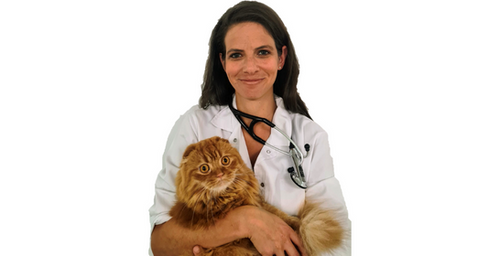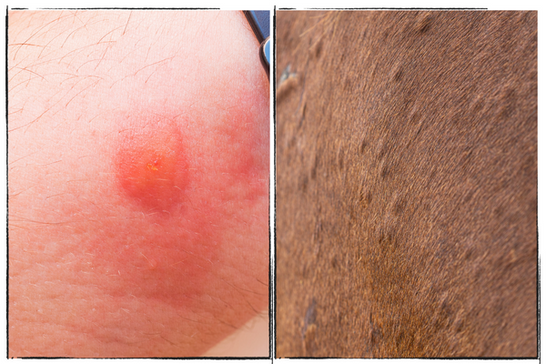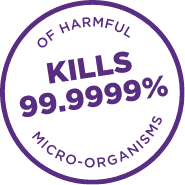Horsefly bites Help Guide

Dr Mattea Ruth Lenhoff BVetMed MBA MRCVS
Qualifying in 2007 from the renowned Royal Veterinary College in London Dr Mattea has immense knowledge through her work as a Snr. Veterinary Surgeon and Regional Head Vet for one of the UK's largest Veterinary Groups.
What are horse flies?
Horse flies belong to the Tabanidae family of insects.
30 species of horsefly are present in the UK though there are over 4,500 species in existence globally, with the exception of the polar regions.
When do they appear?
The life cycle of the horsefly is approximately one year, with adult horseflies appearing in summer, (emerging in June and July) especially in sunlight.
The adult lifespan of an individual horsefly is approximately 30-60 days.
Where do they live?
The horsefly enjoys warmer, wetter areas and are attracted to streams, soil or damp woodland areas. Adults lay their eggs close to open water and larvae are found in aquatic to semiaquatic environments, frequently
concealed in mud at the bottom of lakes and ponds.
Stalls containing manure or dirty feed bins also offer an environment that appeals to these flies
Are horseflies dangerous?
Adult horseflies have scissor like mouthparts and can bite, slicing through the skin of predominantly large, dark-coloured animals, horses and cattle.
However, they are attracted to movement, sweat and carbon dioxide so can also affect humans, dogs and others.
Male horseflies only feed on nectar, whereas females feed on nectar and consume blood when mating to nourish their egg production.
Horseflies cause annoyance to their prey and their bites are very painful.
Significant blood loss can occur to a horse following a mass attack of horseflies.
Importantly, they can pass on infection and diseases. These are usually more dangerous to horses than humans, although some people may develop serious allergies to these bites.
Despite the harmful effects of horseflies there are some benefits to their existence as many plants rely on these flies for pollination. They also
serve an important role in the wider ecosystem, providing a source of food for animals further up the food chain.
Where do horsefly bites occur?
Frequent feeding sites on horses include:
The underside, legs, withers and neck.
What do horsefly bites look like?
A wound or cut in the skin is created and a swollen red lump may develop at the site of a bite, typically a weal or hive.

How do I diagnose a horsefly bite?
Key clues include:
Finding horseflies near the horse with, Characteristic bite marks, shown above.
How to treat bites on horses?

Treatment will depend on the severity and frequency with the problem.
Prevention of infection is important so:
- Clean the site.
- RenaSan first aid spray, with its advanced hypochlorous antiseptic kills 99.9999% of pathogens in seconds and can be used safely for this purpose.
- Place a cold press onto the area, through the application of an ice pack to reduce swelling.
- Ensure the horse is comfortable by removing the itchiness that leads to scratching and secondary infections.
- Topical anti-itch medicine, steroid ointment or antibiotics may be prescribed by a veterinarian. Certain antihistamines may be used though used alone may not sufficiently control the inflammation.
- In severe hypersensitivity to fly bites or other allergens, focused allergy injections or corticosteroid medication may be recommended.
- Continue to monitor the situation and contact your veterinarian if the bit does not improve or worsens.
How to prevent bites on horses
Taking action to prevent horse flies and other pests is always recommended.
Apply a suitable and safe fly repellent to the horse’s coat.
Use physical barriers including purchasing a fly rug, neck cover of mask for the horse to wear.
Consider using insecticides sprays for the stables and a fan may help to blow away flies.
Horsefly traps attract the fly - insert picture
Ensure good hygiene around the yard and daily cleaning of stalls to remove urine and manure.
Use air tight containers for feed, treats or supplements.
Perform a daily examination of your horse, checking for sores, or wounds. If you notice any small cuts, you can safely apply RenaSan first aid spray, with its advanced hypochlorous antiseptic to kill 99.9999% of pathogens in seconds.










